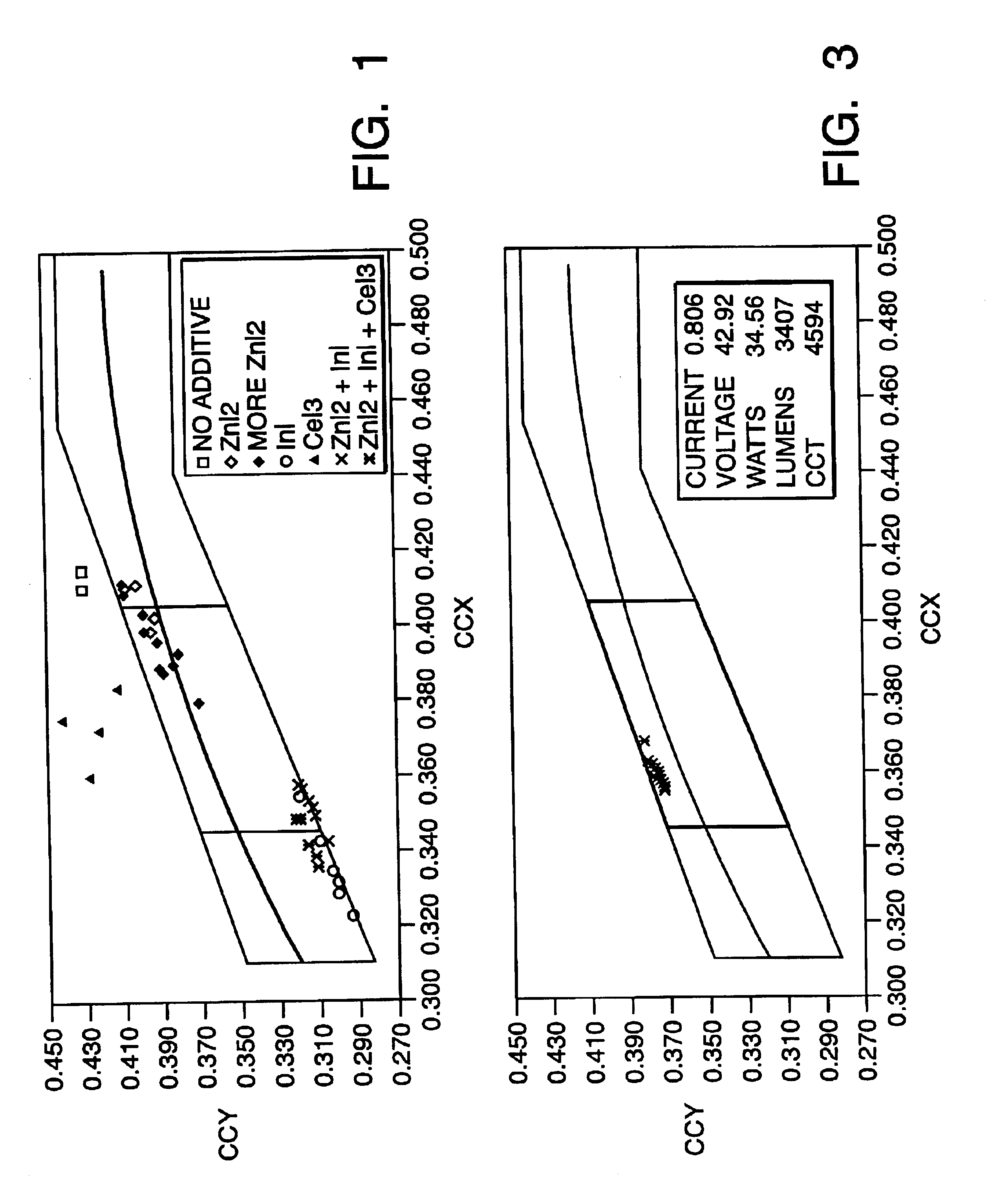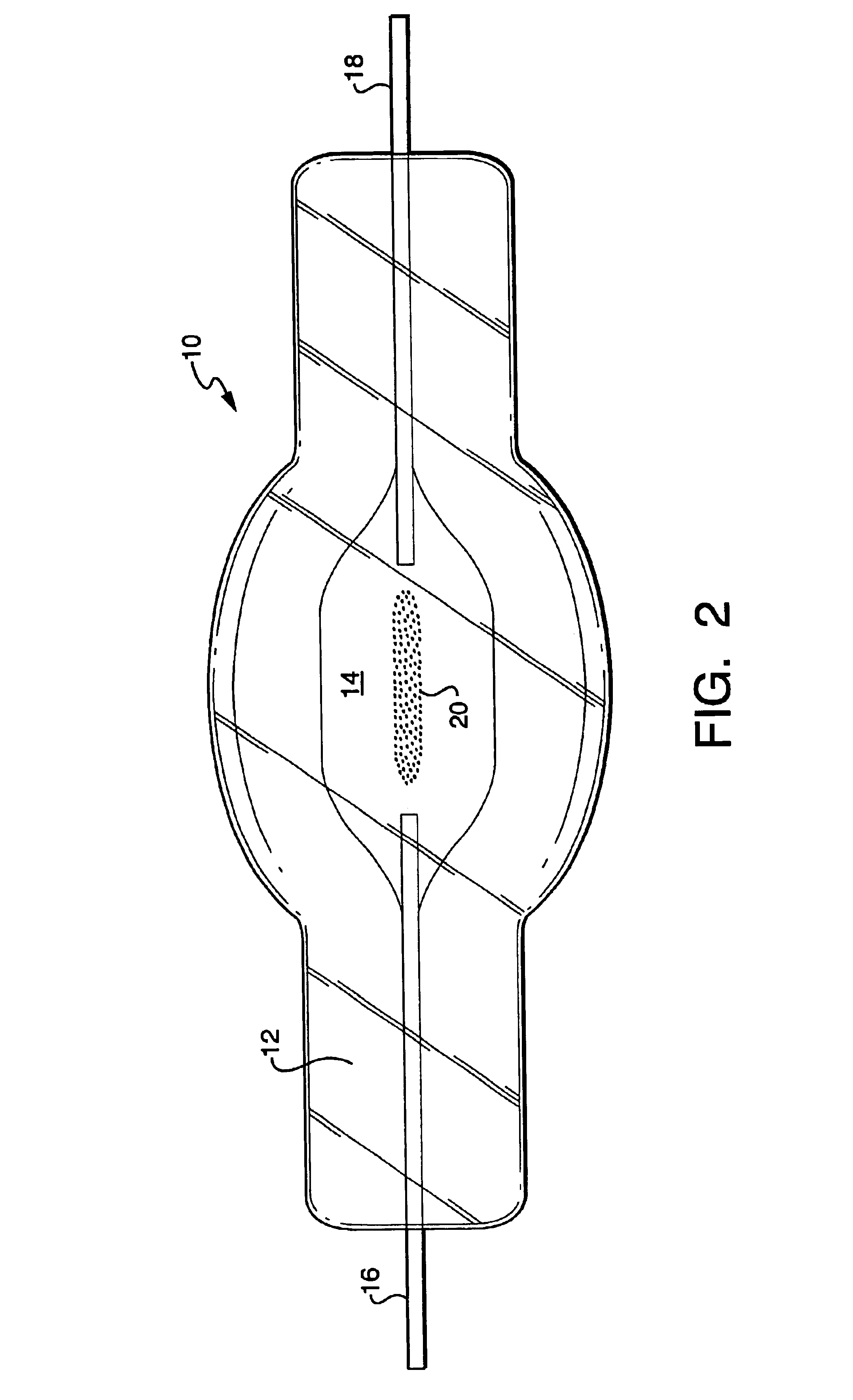Mercury free discharge lamp with zinc iodide
a discharge lamp and zinc iodide technology, applied in the field of electric lamps, can solve the problems of inefficient lamps, high energy loss due to dissociation process, and simple removal of mercury,
- Summary
- Abstract
- Description
- Claims
- Application Information
AI Technical Summary
Problems solved by technology
Method used
Image
Examples
Embodiment Construction
33]FIG. 4 is a graph showing data from sample run of an embodiment of the present invention. Note that the color coordinates are within the Regulation 99 requirements.
[0034]FIG. 5 is a graph showing the thermal conductivity of a series of mercury free NaI—ScI3 ratios with zinc iodide (ZnI2)
[0035]FIG. 6 is a graph showing the electrical conductivity of a series of mercury free NaI—ScI3 ratios with zinc iodide (ZnI2).
[0036]FIG. 7 is a graph showing the effects of additives on the voltage and lumens of NaI—ScI3.
[0037]FIG. 8 is a graph showing a relationship between zinc iodide (ZnI2) dose and voltage (rms) in a lamp of the present invention.
[0038]FIG. 9 is a graph showing lumen maintenance data for mercury free standard automotive lamp chemistry.
[0039]FIG. 10 is a graph showing color maintenance data for mercury free standard automotive lamp chemistry.
DESCRIPTION OF PREFERRED EMBODIMENTS
[0040]The present invention uses zinc iodide (ZnI2) for voltage enhancing additives in specific amou...
PUM
 Login to View More
Login to View More Abstract
Description
Claims
Application Information
 Login to View More
Login to View More - R&D
- Intellectual Property
- Life Sciences
- Materials
- Tech Scout
- Unparalleled Data Quality
- Higher Quality Content
- 60% Fewer Hallucinations
Browse by: Latest US Patents, China's latest patents, Technical Efficacy Thesaurus, Application Domain, Technology Topic, Popular Technical Reports.
© 2025 PatSnap. All rights reserved.Legal|Privacy policy|Modern Slavery Act Transparency Statement|Sitemap|About US| Contact US: help@patsnap.com



